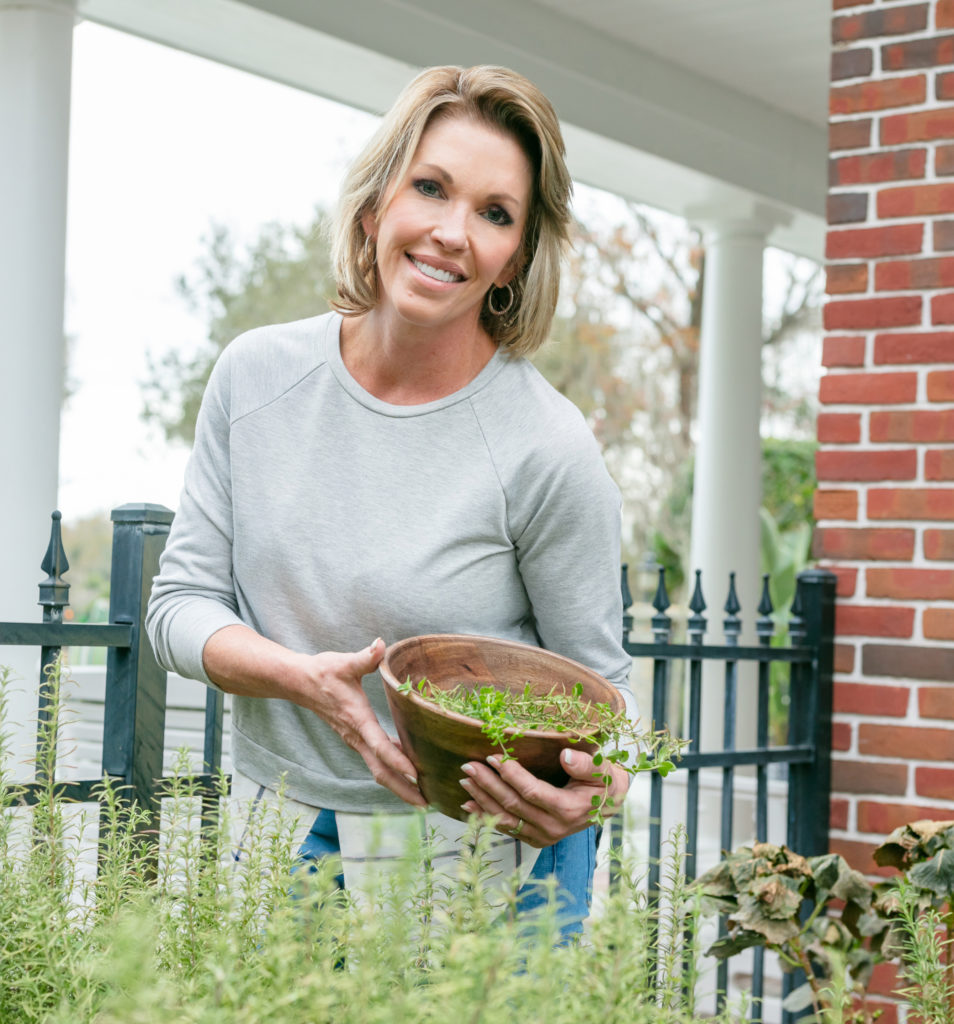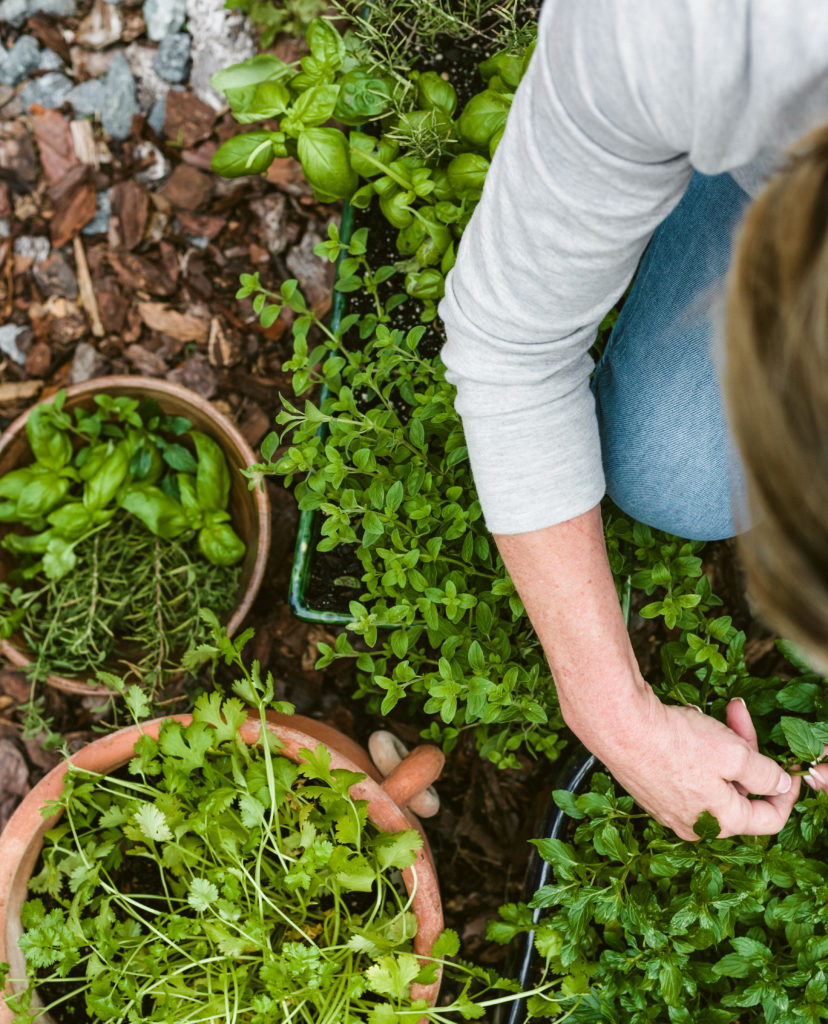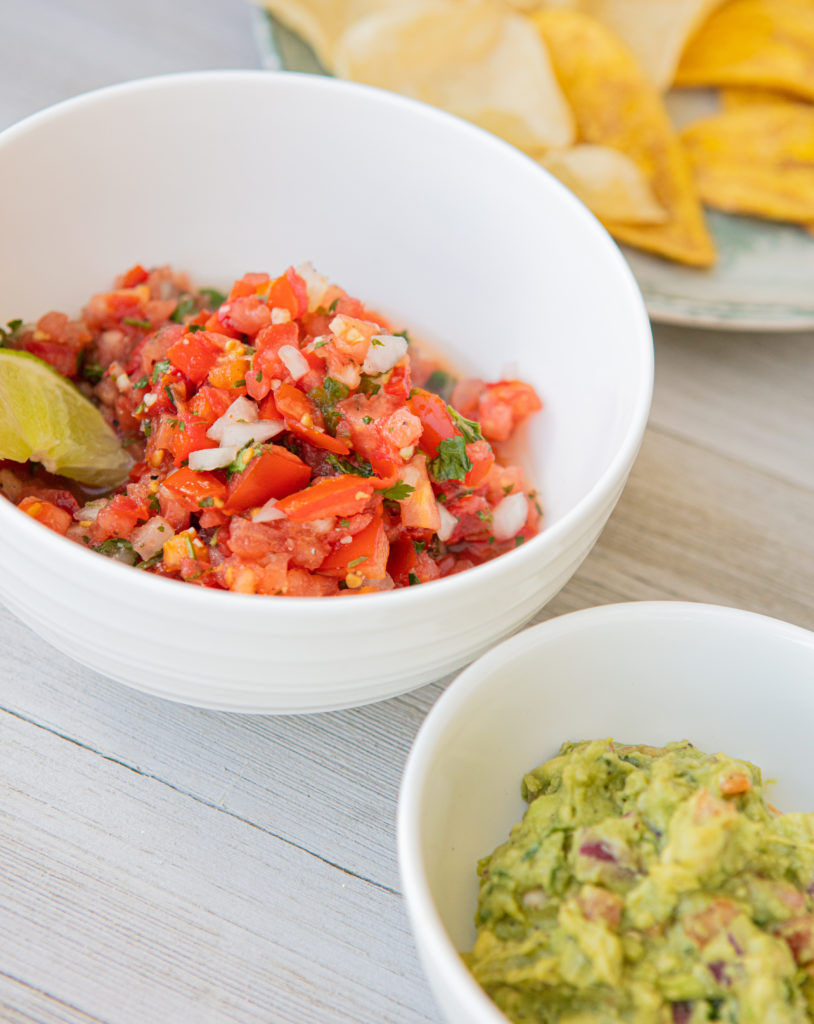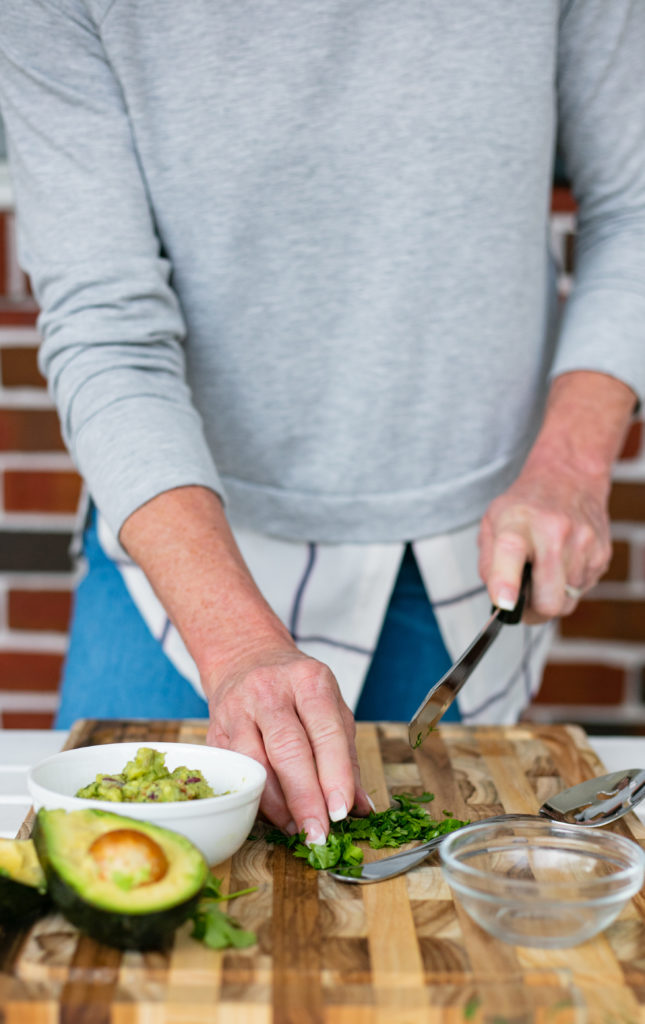Growing herbs at home adds fragrance and color to your garden, ensures you always have the freshest flavors on hand for cooking and provides an ample supply of healthy ingredients for natural remedies as well.
 In my younger years, we had a farm and I had a fabulous vegetable garden. After we moved away, I thought those gardening days were a thing of the past until I discovered my love for, and the ease of, growing herbs.
In my younger years, we had a farm and I had a fabulous vegetable garden. After we moved away, I thought those gardening days were a thing of the past until I discovered my love for, and the ease of, growing herbs.
Herbs can make a dramatic difference in cooking and in our health, and even if you don’t have a “green thumb” it really is fairly easy to grow them.
Whether you live in a subdivision and have a large backyard or in an apartment with a balcony, herbs grow well just about anywhere that receives at least six hours of sunlight. But don’t worry if the only spots you have are a bit shady because some herbs, such as cilantro, parsley and mint, do just fine with only three or four hours of sunlight. Just check the plant tag or seed packet for light requirements. If your space is small, grow herbs in containers. I actually prefer this method so I can bring the pots into the garage when there is a possibility of a freeze.
From wooden window boxes filled with trailing thyme to pretty ceramic pots filled with basil, the choices are endless. Just make sure your container has holes for drainage. I fill my containers with Miracle-Gro Moisture Control Potting Mix, which helps protect against over and underwatering.
My most consistently easy to grow and often used herbs include:
- Basil – It is easy to grow and has endless uses. Toss basil in omelets, sprinkle in a salad, add to tomato sauce or top your tomatoes à la caprese, and it is mouthwatering good when added to an Italian panini sandwich. Basil requires full sun, likes to be kept moist and protected from frost and needs well-drained soil.
- Rosemary – This herb is super hardy. It loves full sun and the Florida heat. I have one bush that is about 4 years old and cascades over its clay pot, which also is home to some Italian oregano and lemon balm. Rosemary can be used for soups, salads, sauces, grilled meats and chicken and fish. Consuming rosemary in your diet helps to reduce systemic inflammation. If you suffer from arthritis or issues affecting the nervous system, for example, eating rosemary can help relieve symptoms of pain and irritation. Combining rosemary oil with a carrier oil, such as coconut or olive, allows you to use it as a skincare lotion to help heal the cracks on your feet and elbows. When you have a cold, you can find soothing relief with a hot tea of rosemary, lemon balm and peppermint.
- Italian oregano – This is perfect for cooking and adds a spicy flavor to any dish. It can be used like thyme. It is great to add a pocket of it in a pork or veal chop to add some kick. Oregano likes to grow in a large pot in full sun with adequate drainage. It is cold hardy and likes to be kept moist.
- Lemon balm – This herb requires partial sun and should be protected from frost. It likes to be kept moist, but needs well-drained soil. Lemon balm has many benefits, such as reducing anxiety, stress indigestion and insomnia. It is best used right after harvesting. If you use it in cooking, add it just before serving the dish. Lemon balm is great on chicken and fish. A great medicinal use is to harvest some leaves, pour boiling water over them and let the tea steep for 15 minutes. You can add in a touch of rosemary and mint to get more benefits. Lemon balm also helps keep pests out of the garden and is of benefit to bees.
- Peppermint – It only requires partial sun but can be grown in full sun. It is another cold hardy plant that likes to be kept moist in well-drained soil. Use this sparingly as a little goes a long way with flavor. Some of my favorite uses are for mint tea, adding it to a sparkling white wine, and what is the Kentucky Derby without a good old-fashioned mint julep? You also can add tiny bits to your favorite fruit salad.
- Cilantro – This herb is a little bit tricky to grow. It does require full sun and likes to be kept moist in well-drained soil. It is very cold sensitive, so you will need to protect it from frost. Some people do not like cilantro, but I find it to be delicious added to my salsa and guacamole, on top of spicy chicken chili, with stews or in various Mexican recipes.
All herbs respond well to harvesting and will grow thicker and bushier with frequent snipping.  For best results, harvest in the morning using a pair of garden shears or kitchen scissors. Never remove more than one-third of the plant so it can recuperate and continue growing throughout the season. Herbs taste best before they begin to flower. By pinching back basil as soon as you see blooms beginning to form, for instance, you’ll extend the herb’s harvest life. I recommend that you also find a good vegetable fertilizer to keep them thriving.
For best results, harvest in the morning using a pair of garden shears or kitchen scissors. Never remove more than one-third of the plant so it can recuperate and continue growing throughout the season. Herbs taste best before they begin to flower. By pinching back basil as soon as you see blooms beginning to form, for instance, you’ll extend the herb’s harvest life. I recommend that you also find a good vegetable fertilizer to keep them thriving.
The annual Marion County Master Gardeners’ Spring Festival, held the second weekend in March at the Southeastern Livestock Pavilion, except for last year and this year because of COVID-19, is usually a great place to get some fresh herb plants. With the cancellations, they instead offer seed packets. To learn more, go to Events – UF/IFAS Extension (ufl.edu).
If you just can’t wait to get started, be sure the last frost of winter has passed before you go herb hunting at an area retailer or garden center.
Once you get to growing, drop me a message or tag me on Instagram @festivelysouthern and under Festively Southern Recipes on Facebook, with a photo of your herb garden.
Happy planting!
Best Darn Southern Salsa
I have found through experimentation that the best salsa is made with fresh, nicely ripened, in-season tomatoes. This is my favorite salsa recipe and it has the perfect ratio and blend of everything, including fresh and canned tomatoes. It has a classic Mexican flavor, with the cilantro and hint of chili powder and cumin. You only need the sugar if you use store-bought tomatoes. If you grow your own or buy them at a farmers market, the quality is a bit better and they’re a bit sweeter.
1 1/4 pounds ripe Roma tomatoes (about five to six)
1 14.5 ounce can petite diced tomatoes
2 green onions, ends trimmed, chopped into thirds
1 jalapeño pepper, seeded and roughly chopped
1 large clove garlic, roughly chopped
1/3 cup red onion, chopped
1/3 cup fresh cilantro
2 tablespoons fresh lime juice
1/2 teaspoon chili powder
1/2 teaspoon granulated sugar
1/4 teaspoon ground cumin
Salt and pepper to taste
Combine all ingredients in a food processor and pulse in 1 second bursts until finely chopped. › Salsa tastes best after it has been refrigerated for a few hours, so if time allows let the flavors marinate together before serving. › Store in refrigerator up to one week. › Serve with tortilla chips.

The Perfect Guacamole
This easy recipe is always on rotation in my house. Guacamole is a healthy dip and, for us, is a staple at every gathering and a must when we have taco night. This recipe has converted many non-avocado lovers.

3 medium-size Hass avocados, pitted and halved (about 15 ounces)
1 lime, juiced
1/2 Roma tomato, finely diced
1/3 cup red onion, minced
1 small clove garlic, mashed
1 tablespoon cilantro, chopped
Salt and fresh pepper to taste
Start with perfectly ripe avocados—if they are too hard, or overripe, the results will be less than stellar. › Place the pulp from the avocados in a medium bowl and slightly mash with a fork or a potato masher, leaving some large chunks. › Add lime juice, salt, pepper, cilantro, red onion and garlic and mix thoroughly (if you like it spicy, you can always add diced jalapeño). › If serving at a later time, keep the pits in the bowl, along with some cut up lime wedges, and cover tightly with plastic wrap on the surface of the guacamole so no air gets on it. › Makes 2 cups. › Serve with tortilla chips or as a side dish.






